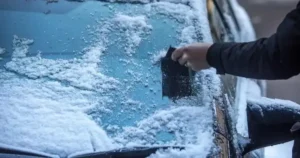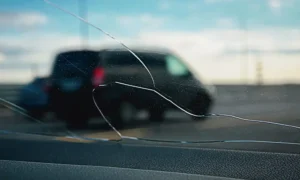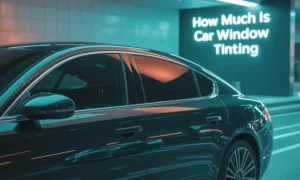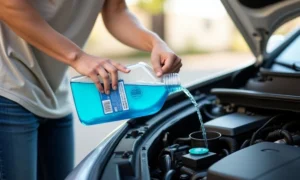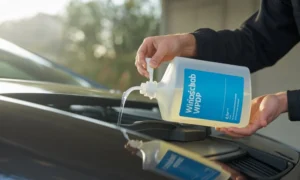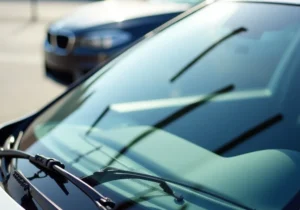Types of windshield cracks play a crucial role in vehicle safety and driver visibility. Maintaining windshield integrity is essential, as even minor damage can compromise the structural strength of a vehicle and impair the driver’s view. Understanding the various types of cracks—such as star breaks, bulls-eye cracks, and fissures—can help vehicle owners assess the severity of damage and determine whether repair or replacement is necessary. Each type of crack has its significance, not only affecting the aesthetic appearance of the windshield but also influencing the overall safety of the vehicle. By recognizing these cracks and their implications, drivers can make informed decisions about maintenance and ensure a safer driving experience.
Types of Windshield Cracks and Causes
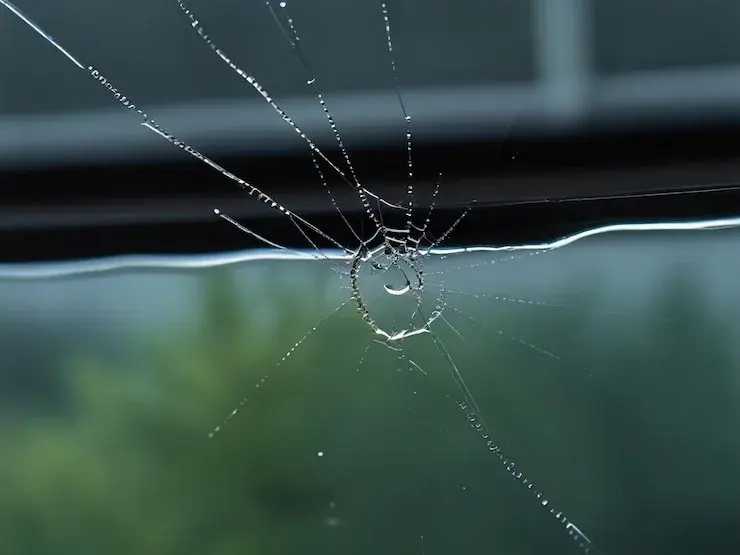
Windshield cracks can pose significant safety risks, making it essential for drivers to understand the various types of cracks and their causes. Here, we’ll explore several common types of windshield cracks, their descriptions, and the typical factors that lead to their formation.
Star Cracks
Star cracks are characterized by a central point of impact with several small lines radiating outward, resembling a star. These cracks are usually shallow and can vary in size but are generally more localized compared to other types.
Common Causes
Star cracks typically result from impacts by small debris, such as pebbles or gravel, that are kicked up by other vehicles. These impacts create a concentrated point of pressure, leading to the formation of the star pattern.
Bullseye Cracks
Bullseye cracks are circular in shape and feature a dark center surrounded by a clear outer ring. This type of crack can be more extensive than star cracks and often indicates a deeper impact.
Typical Causes
Bullseye cracks are generally caused by larger stones or projectiles that hit the windshield with significant force. The impact point creates a dimpled effect, causing the glass to crack in a circular pattern. The severity of the impact often correlates with the size of the object that caused it.
Edge Cracks
Edge cracks occur near the perimeter of the windshield and may extend toward the center. These cracks can be straight or slightly jagged and often indicate a more serious underlying issue.
Causes
Edge cracks can arise from several factors, including temperature changes that cause the glass to expand and contract. Additionally, manufacturing defects can lead to weaknesses at the edges of the glass, making it more susceptible to cracking. They may also result from impacts, particularly if the glass was already compromised.
Combo Cracks
Combo cracks are a mix of different crack types, often featuring characteristics of both star and bullseye cracks. They may have a central impact point with radiating lines and additional cracks branching off.
Causes
Combo cracks typically result from a combination of impacts. For example, if a windshield is struck by a larger object that causes a bullseye crack, smaller debris may then cause star cracks, leading to a complex pattern of damage. This type of crack can be particularly challenging to repair, as it often involves multiple impact points.
Long Cracks
Long cracks are characterized by their significant length and can stretch across the windshield, potentially affecting visibility. These cracks may appear as a single line or as a series of connected lines.
Causes
Long cracks can develop due to temperature fluctuations and pressure changes, particularly in climates with extreme weather variations. The constant expansion and contraction of the glass can lead to stress fractures. Additionally, impacts from larger objects can initiate long cracks, especially if the windshield was already weakened.
You May Also Read: How Much to Fix Chip in Windshield?
Windshield Cracks That Can Be Repaired
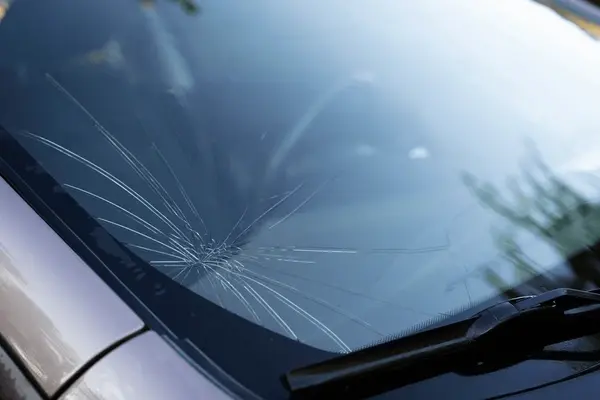
Overview of Repairability
When dealing with chipped or cracked windshields, understanding repairability is essential. Many types of glass damage can be effectively repaired, allowing you to restore the integrity of car without the need for a complete windshield replacement.
Types of Cracks Typically Repairable
- Star Cracks: These are star-shaped fractures that can often be repaired if they are under a certain size. Typically, cracks that are smaller than a quarter can be fixed without replacing the entire windshield.
- Bullseye Cracks: These circular cracks are generally repairable, provided they are not too deep. If the damage is superficial, a repair can effectively restore the windshield’s structural integrity.
- Minor Edge Cracks: Edge cracks that are short and not extending into critical areas of the windshield can often be repaired. However, their location and size will determine the repairability.
Signs a Crack Can Be Repaired
- Size: If the crack is smaller than a quarter or chip, it is usually repairable.
- Depth: If the crack does not penetrate deeply into the glass layers, it can often be fixed.
- Location: Cracks away from the driver’s line of sight and not near the edges are typically easier to repair.
Benefits of Repairing vs Replacing
Repairing a chipped or cracked windshield offers several advantages over replacement:
- Cost-Effective: Repairs are generally less expensive than a full replacement.
- Time-Saving: Most repairs can be completed in under an hour, while replacements require more time.
- Preserves Integrity: Repairing helps maintain the original structure of the windshield, which is important for safety.
- Minimizes Environmental Impact: By choosing to repair, you reduce waste and the environmental footprint associated with producing new glass.
Windshield Repair and Replacement in Austin
At Reliable Auto Glass, we specialize in providing top-notch windshield repair and replacement services in Austin. Our expert team is dedicated to ensuring your vehicle is safe and secure on the road.
When to Repair or Replace
Deciding whether to repair or replace your windshield can be a tough call. Here are some factors to consider:
Easily Repaired Damage
Many windshield issues can be easily repaired, such as:
- Small Chips and Cracks: If the damage is minor and located away from the driver’s line of sight, our technicians can typically repair it quickly and effectively.
- Star and Bullseye Cracks: These types of damage are often suitable for repair, especially if they are under a certain size.
When Replacement is Necessary
In some cases, replacement may be the best option:
- Large or Deep Cracks: If the damage extends beyond the repairable size or depth, a full replacement will ensure your safety.
- Edge Damage: Cracks near the edge of the windshield can compromise its structural integrity, making replacement the safer choice.
Benefits of Choosing Reliable Auto Glass
- Expert Assessment: Our skilled technicians will evaluate your windshield damage and provide honest recommendations on whether to repair or replace.
- Quality Service: We use high-quality materials and advanced techniques to ensure a lasting solution, whether we’re repairing or replacing your windshield.
- Convenience: We offer flexible scheduling and quick turnaround times, so you can get back on the road safely.
You can also read about how to stop a windshield crack from spreading.
FAQs
How Do I Identify A Star Crack?
A star crack typically has multiple lines radiating from a central impact point. They are often small, but their repairability depends on their size and depth.
What Distinguishes A Bullseye Crack From Other Types?
A bullseye crack features a circular pattern with a distinct center. These are usually caused by a small object impacting the glass and can be repaired if not too deep.
Are Edge Cracks Repairable?
Edge cracks can be tricky. If they are short and not near critical areas, they may be repairable. However, if they are long or extend into the driver’s line of sight, replacement is often recommended.
What Should I Do If I Notice A Long Crack In My Windshield?
Long cracks generally require replacement, as they can compromise the windshield’s structural integrity. It’s best to have a professional assess the damage as soon as possible.
Can Temperature Fluctuations Affect Windshield Cracks?
Yes, temperature fluctuations can worsen existing cracks. Rapid changes in temperature can cause the glass to expand and contract, potentially leading to further cracking.
How Can I Prevent Windshield Cracks?
To minimize the risk of cracks, avoid driving on poorly maintained roads, maintain a safe following distance, and park in shaded areas to protect your windshield from extreme temperature changes.


